‘Decoration is futile,’ wrote the Victorian designer William Morris, ‘when it does not remind you of something beyond itself, of something of which it is but a visible symbol.’ In Morris’s case, the ultimate reference point for design was experience of the natural world – of the ‘close vine-trellis that keeps out the sun […] or of the many-flowered summer meadows of Picardy’. For the ceramic artist William De Morgan, Morris’s follower, colleague and the subject of ‘Sublime Symmetry’, currently at the Guildhall Art Gallery, the ‘beyond’ seems to have been altogether more abstract, a world of shapes and patterns perceived through the study of mathematics.
While Morris’s shadow looms large over the Arts and Crafts movement of which De Morgan was a key member, the exhibition argues that he was not the only, nor indeed the most significant, influence on De Morgan’s ceramics career. Instead, it is De Morgan’s father Augustus who is given credit for equipping his son with a unique design vocabulary. Augustus was the first professor of mathematics at the newly founded University College London, where he made significant contributions to the fields of algebra and logic. He also found time to tutor private students including Ada Lovelace, now known for her contribution to the fields of computing and artificial intelligence.
Organised by the De Morgan Foundation and the London Mathematical Society, the exhibition creates the sense of a fizzing intellectual family environment with mathematics at its centre. The young De Morgan’s exposure to the world of algebra evidently started in infancy, as shown by childhood pictures drawn on the reverse of pages of mathematical equations, student work brought home by Augustus and recycled as scrap for his children. The impression that William received a mathematical education from the cradle is reinforced by De Morgan himself who wrote of the young protagonist in his autobiographical novel Joseph Vance sitting on his mentor’s knee and reading Euclid. The Greek mathematician remained a key influence on De Morgan, who described Euclid’s mathematical treatise Elements as ‘the most entrancing novel in literature’ (though modern readers of De Morgan’s own novels, for which he was principally famous during his lifetime, may have cause to doubt whether he was an especially astute judge of what made a good book).
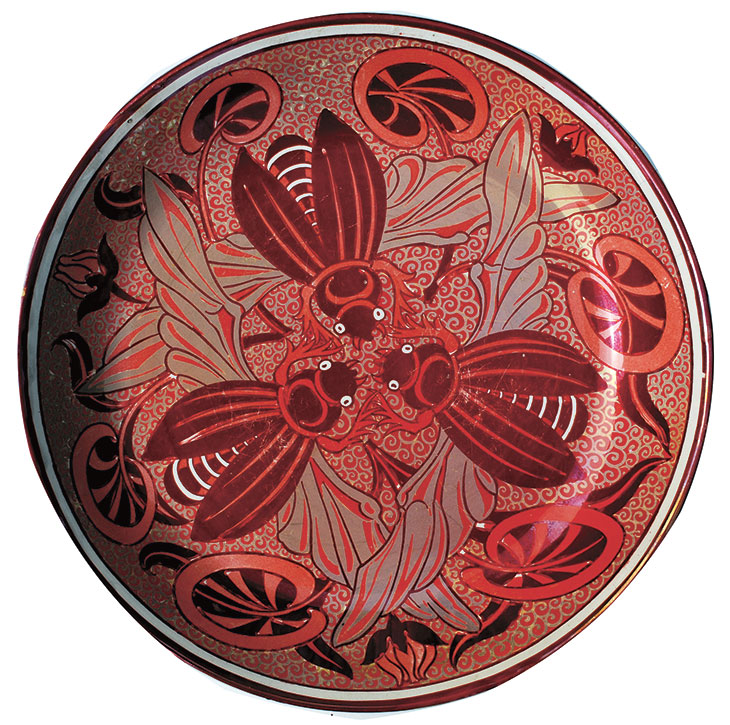
Bee Plate (1872–1904), William de Morgan. Photo: © De Morgan Foundation
Although William did not follow in the footsteps of his brother George, who co-founded the London Mathematical Society, he did attend his father’s classes while he was a student at University College. Given William’s self-confessed ‘aversion to letters’ this may have been more out of a sense of filial duty than academic ambition, and he left UCL without a degree, determined, against his father’s wishes, to become an artist. After an unsuccessful stint at the Royal Academy Schools, De Morgan worked briefly for William Morris before establishing himself as a ceramicist. His talent for design and experimental techniques, including the revival of metal-glazed lustreware, ultimately contributed to his position as the most celebrated ceramics designer of his generation.
De Morgan was a notoriously poor businessman and one wonders how the son of a mathematician could have been so woefully ill-equipped to balance his books. Yet despite the limits to William’s mathematical aptitude, he continued to use his early lessons as central artistic principles. The ‘sublime symmetry’ of the exhibition’s title refers to De Morgan’s penchant for creating designs based around the manipulation of geometric forms, in which he used his familiarity with the language of mathematics to create compositional order and repeating patterns.
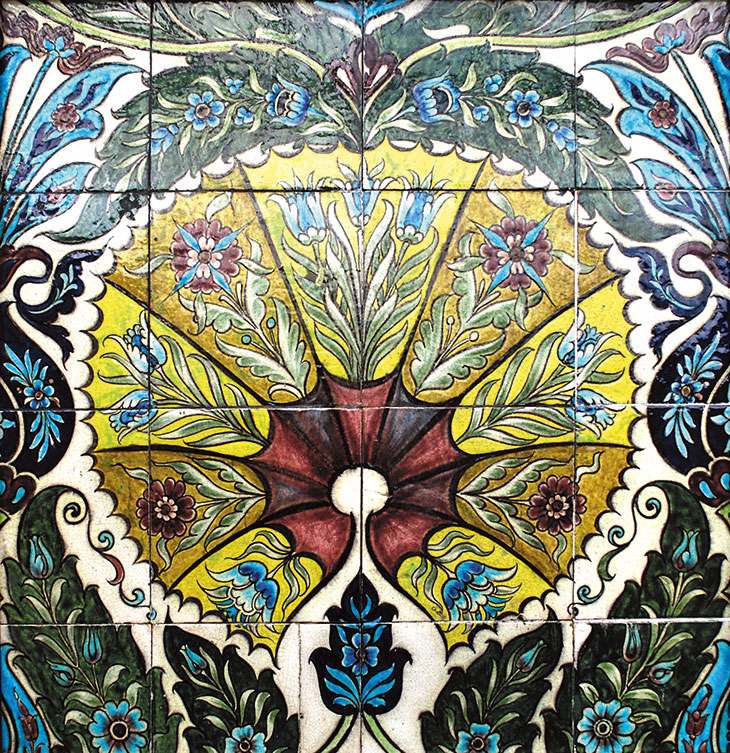
Fan tile panel (1872–1904), William De Morgan. Photo: © De Morgan Foundation
The exhibition’s centrifugal point is a set of basic mathematical principles De Morgan employed, including symmetry, tessellations and geometric shapes. A striking ruby lustreware dish decorated with three insects exhibits rotational symmetry of overlapping triangles, while the precise vertical symmetry of a fan tile panel draws the eye in and upwards through an explosion of botanical ornament. While aesthetically pleasing, these examples are not in themselves indicative of virtuoso mathematical ability; their accessibility rather than their complexity is emphasised by the accompanying labels, written by local primary-school children. An animal chasing its tail around a plate may exhibit rotational symmetry, but its value lies in whimsy and charm rather than mathematical prowess.
More interesting are the individual tiles that serve as building blocks for larger geometric schemes. While the exhibition contains few physical examples of the ways in which individual tiles could be combined to create large-scale repeating patterns, accompanying images of schemes such as ‘Black Swan and Daisy’ and ‘Peacock and Carnation’ show the impact made possible through translation – the repetition of a pattern in different places throughout a design. De Morgan may have been inspired by his father’s work on infinity, but the dizzying effects also bring to mind the 19th-century craze for kaleidoscopes.
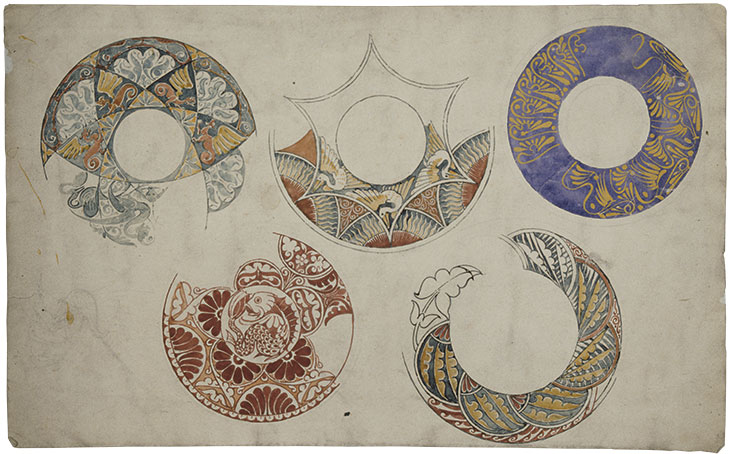
Border designs for ceramics (late 19th century), William de Morgan. Photo: © Victoria and Albert Museum, London
De Morgan was profoundly impressed by Islamic patterns and his designs show the influence of the Turkish ceramics then on view at the South Kensington Museum, now the V&A. There is an apt symmetry of a different kind, therefore, to the fact that the V&A now holds many of his design drawings, a few of which are on display at the Guildhall. It is these preparatory works that show precisely how De Morgan used mathematics to structure designs. Close scrutiny of a sheet showing five designs for plate borders reveals tiny pin pricks in the centre of each circle, evidence of the compass he used to create the swirling segments of each pattern. Nearby is a design for an Italianate dish, one half pricked to allow dark ‘pounce’ to be rubbed through on to the plate. The sheet could then be turned over in order for its mirror-image to be transferred in the same way, creating a perfectly symmetrical design.
While so-called Persian forms clearly inspired De Morgan, his work lacks the spiritual significance of Islamic designs in which endlessly repeating patterns represent the infinite nature of Allah. In place of any religious conviction, object after object in this comprehensive exhibition shows De Morgan’s belief in a guiding principle of the Arts and Crafts movement, that beauty and truth emerge from the joy of craftsmanship and the satisfaction of labour. The experimental nature of De Morgan’s work suggests a delight in combining the possibilities of mathematics with the practicalities of design. The result is a body of work that exploits the certainties of geometry to create a reassuring and enduringly popular form of decoration.
‘Sublime Symmetry: The Mathematics Behind William De Morgan’s Ceramic Designs’ is at the Guildhall Art Gallery, London, until 28 October.
From the October 2018 issue of Apollo. Preview and subscribe here.
Unlimited access from just $16 every 3 months
Subscribe to get unlimited and exclusive access to the top art stories, interviews and exhibition reviews.

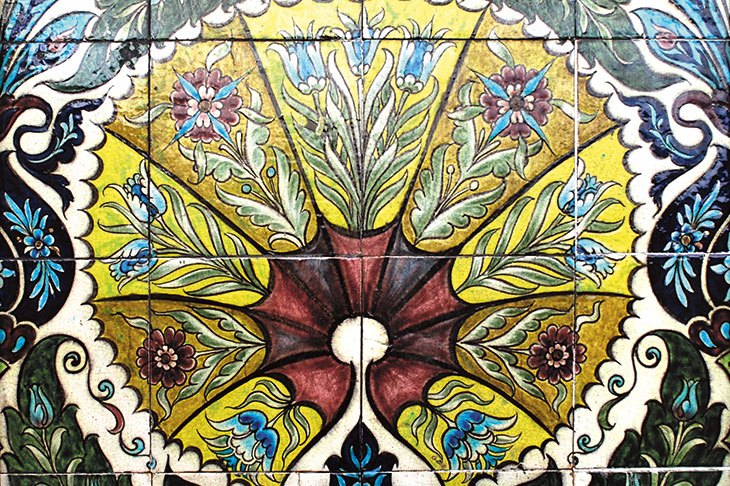
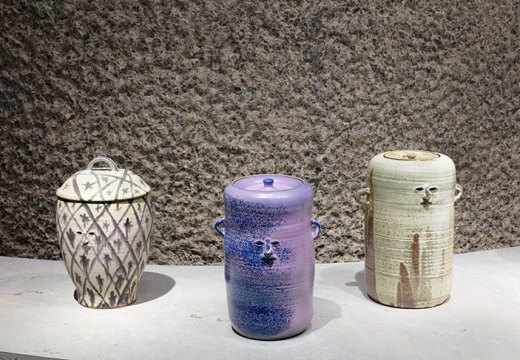
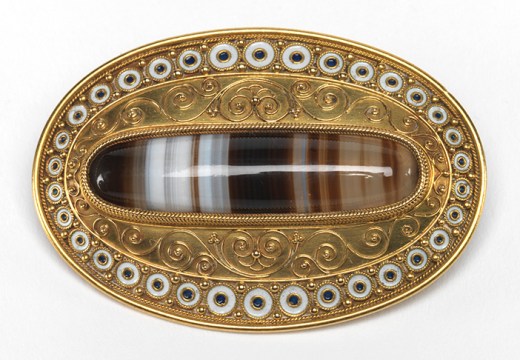
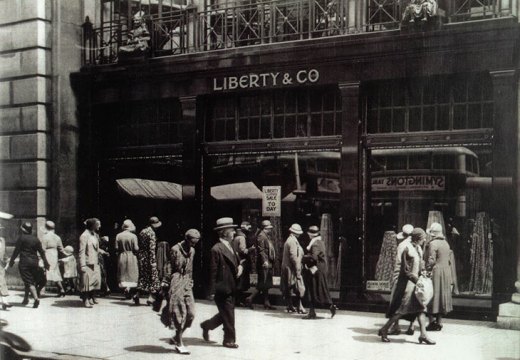









![Masterpiece [Re]discovery 2022. Photo: Ben Fisher Photography, courtesy of Masterpiece London](http://www.apollo-magazine.com/wp-content/uploads/2022/07/MPL2022_4263.jpg)
It’s time for the government of London to return to its rightful home